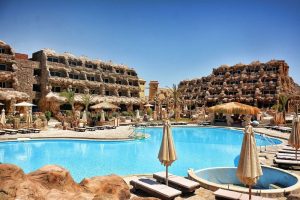Climbing Kilimanjaro is a dream for many adventurous souls. It’s an iconic peak that draws thousands every year, all hoping to conquer its snowy summit. I haven’t tackled the climb myself, so I’ve asked Chris, our community manager who has, to share some invaluable tips to help increase your chances of success and save you some cash along the way.
Reaching the summit at sunrise is an unforgettable experience. Imagine standing at the highest point in Africa, feeling on top of the world after a grueling week-long trek that included a 17-hour day. It’s a spellbinding moment that makes all the hardship worth it.
Kilimanjaro isn’t just another mountain—it’s a symbol of challenge and adventure. Like reaching Everest Base Camp or exploring Machu Picchu, it attracts those who are looking for more than just a holiday. It’s about testing your limits. Despite becoming more accessible to tourists, Kilimanjaro remains a formidable challenge, with a significant risk involved. In fact, only about 45–65% of climbers reach the peak.
To maximize your chances of success, you need a solid plan. Let’s dive into what you need to know:
Choosing the Right Route:
Kilimanjaro offers six main routes, each with different lengths, difficulties, and success rates. Your choice will depend on your budget, available time, and the trekking company you choose. For instance, the Marangu route is easier but has a lower success rate due to underestimation of the challenge. The Machame route, known as “the whiskey route,” is tougher but boasts over a 60% success rate when tackled over seven days.
Cost Considerations:
Costs can vary dramatically—from budget options that might cut corners to luxury outfits that go all out, like carrying a bed up the mountain! I recommend choosing a mid-range provider. They’re more likely to have qualified guides and treat their porters fairly, ensuring everyone’s safety and enhancing your overall experience. Prices range from $1,000 to $5,000 USD, but beware of anything less than $2,000—it’s likely too good to be true.
Finding the Right Tour Company:
Since solo climbs without porters are not allowed, you’ll need a reliable company. Look for one with good reviews and fair porter treatment. Check their success rates and make sure they include necessary accommodations before and after your trek. Companies like Intrepid Travel and G Adventures are great starting points as they adhere to responsible tourism standards.
Tipping Your Guides and Porters:
Tipping is customary and crucial. You’ll need local currency for this—plan on tipping around 15% of your trip cost, which can amount to a significant sum. It’s a way to acknowledge the hard work of your team who support you throughout the climb.
13 Quick Tips for a Successful Climb:
- Ensure your travel insurance covers high-altitude hiking.
- Physically prepare yourself; the fitter you are, the better.
- Mental resilience is key, especially during the final grueling day.
- Consider altitude sickness medication; consult your doctor for options like Diamox.
- Carry a water filter for extra safety.
- Choose a company that provides essential gear.
- Pack your favorite snacks for energy boosts.
- Opt for a portable toilet—it’s worth the extra cost.
- Stay hydrated; aim for 4-5 liters of water daily.
- Break in your hiking boots well before the trip.
- Walk slowly to aid acclimatization.
- Communicate any dietary restrictions to your tour operator repeatedly.
- Carry extra batteries or a charger for your camera.
By paying attention to these details and preparing adequately, you’ll not only enjoy the journey but also enhance your chances of making it to the summit of Kilimanjaro safely and successfully.







